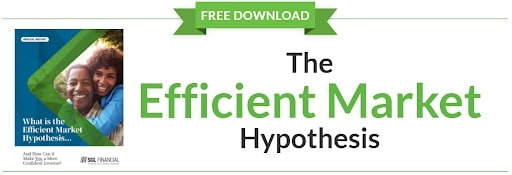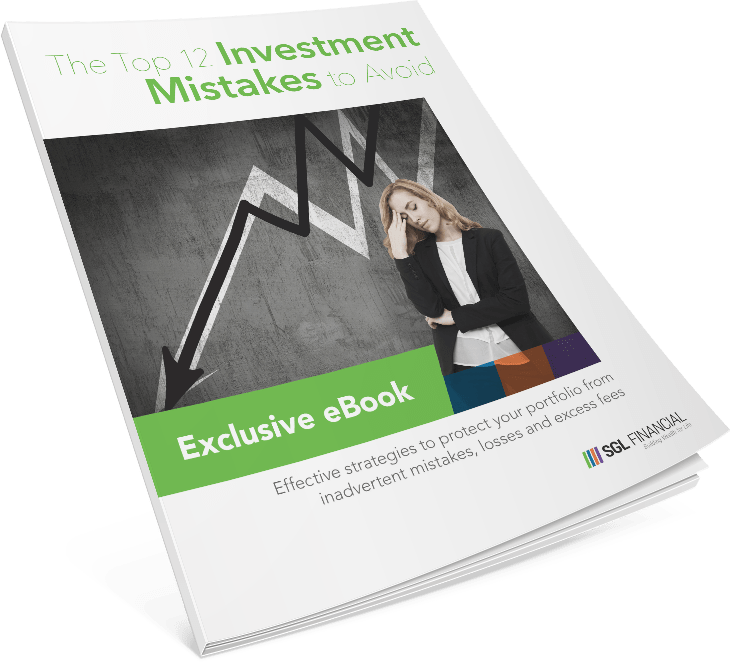Strategies for Building a Crisis-Proof Investment Portfolio
by Gabriel Lewit

Financial crises are inevitable, but their impact on wealth needn’t be as devastating if certain strategies are implemented before they happen.
Crafting a financial crisis-proof portfolio requires a strategic blend of diversification, disciplined behavior, proactive planning, and ongoing oversight. This ensures that your wealth can withstand the economic headwinds that impact public companies’ earnings.
In our blog today, we’ll look at various tactics you can use to protect and grow your wealth through diversification, behavioral discipline, and proactive planning. This will ensure your financial goals—like a secure retirement or legacy for future generations—remain within reach no matter what economic conditions are present.
With over 30 years of wealth management experience, the SGL Financial team has guided clients through various market corrections, helping them protect and nurture their wealth with resilient portfolios despite financial crises.
A Look at the Past 25 Years
Some financial crises often strike with little warning and are triggered by hard-to-predict economic, psychological, and external factors. To gain some perspective, let’s break down the stock market’s inevitable cycles over the past 25 years, and the impact on a $1M portfolio (assuming solely invested in the S&P 500):
Bear Market: 2000–2002 Dot-Com Bubble Collapsed: S&P 500 fell 49% as the tech bubble burst, worsened by the 2001 recession and 9/11. For example, a $1M portfolio lost $490K of its value. This was an unrealized loss if you did not sell during the market decline.
Bull Market: 2002–2007 Recovery: S&P 500 rose 20%+, driven by low interest rates, despite Iraq War dips, setting up for the 2008 crisis.
Bear Market: 2007–2009 Financial Crisis: S&P 500 dropped 57% amid subprime mortgage collapse; $1M portfolio fell to $430K, with 10% unemployment.
Bull Market: 2009–2020 Longest Bull Run in History: S&P 500 soared 400% with low rates and tech growth; $1M grew to $5M, despite 2018’s 19.8% correction.
Bear Market: 2020 COVID: S&P 500 fell 34% in a month, recovered 68% by year-end; $1M dropped to $660K.
Bull Market 2020–2022 Post-COVID: S&P 500 rose 20%+ with vaccines and tech, but inflation loomed, fueling recency bias.
Bear Market: 2022 Inflation: S&P 500 fell 25% amid rate hikes and Ukraine war; a $1M portfolio lost $250K over 10 months.
Bull Market 2022–2025 Current Run: S&P 500 up 63% by 2025, but tariffs caused a $5T, 10% correction; a $1M portfolio dipped to $900K.
Are you preparing your 2024 taxes?
Be sure to listen to our recent podcast, “The Taxes Game Plan.”
Diversification: Your First Line of Defense
Diversification is the foundation for creating a crisis-proof portfolio. It may dramatically reduce your risk of large losses since an event only impacts part of your portfolio. This is where correlated vs. uncorrelated assets can affect your strategy. Like tech stocks, correlated assets often move together, rising or falling in sync. Uncorrelated assets, such as stocks and bonds, move independently—stocks fell 34% in 2020 while bonds rose 5%, helping balance your portfolio’s risk.
By spreading investments across uncorrelated asset classes, you may reduce the risk of a single event derailing much of your wealth. A balanced mix—say, 50% stocks, 30% bonds, 10% real estate, and 10% gold—can cushion various economic woes.
Here are some ways you can diversify your portfolio:
- A balanced mix of 50% stocks, 30% bonds, 10% real estate, and 10% gold—could protect more of your assets from large market swings.
- Consider adding international ETFs to tap growth in Europe and Asia while balancing declines in the U.S. market.
- Consider increasing your holdings of Treasuries or municipal bonds, which can be more stable due to the higher interest rate component.
- Look at alternative investments, such as income-producing real estate, precious metals, cryptocurrency ETFs, or commodities, which can act as safe havens.
SGL Financial’s team of wealth management advisors in Buffalo Grove, IL, leverages this strategy to help stabilize your portfolio during periods of market volatility.
Behavioral Finance: Staying Disciplined Amid Periods of Chaos
Behavioral finance offers strategies to counter emotional traps during financial crises. For example, loss aversion—losses have twice as much emotional impact as gains—can lead to panic selling after most of the damage has been done. To illustrate, in 2020, many sold at or near the S&P 500’s bottom (down 34%), missing the 68% rebound that occurred by year-end.
To stay disciplined:
- Set Clear Rules: To avoid knee-jerk reactions to short-term events, consider rational triggers for taking action—like rebalancing only if your allocation shifts more than 5% or 10%.
- Be clear on the nature of risk: Your biggest risk is not the stock market’s short-term volatility. It is a failure to pursue your long-term financial goals. For example, retire when you want to and live as you want.
- Focus on Long-Term Goals: A $100,000 dip in 2025 might recover to $250,000 in 10 years at a 10% annual return, as the S&P 500’s 400% rise since 2009 suggests. However, the future may be like the past.
- Avoid Herd Behavior: Don’t follow the crowd selling on emotion, as in 2025’s tariff scare. Stick to your plan by minimizing the impact of what you see in the media. They stoke emotions to increase their number of followers.
Listen to our recent podcast on: “Stock Picks and Slam Dunks.”
Why Asset Location Strategies Matter
You often read about asset allocation strategies, an important component of a comprehensive wealth management strategy. However, another component doesn’t get as much publicity, but it should: Asset location strategies.
Asset location strategies are crucial in safeguarding your wealth during market downturns by optimizing where you hold investments based on tax efficiency and accessibility.
Placing high-growth assets like stocks in tax-advantaged accounts (e.g., Traditional IRAs, Roth IRAs, or 401(k)s) allows gains to grow tax-free or tax-deferred, shielding them from immediate tax hits during rising and falling markets.
Conversely, holding income-producing assets, such as bonds or dividend stocks, in taxable accounts might minimize tax burdens, as their returns often qualify for lower rates.
If you have a $1 million portfolio, this strategy could save thousands annually—say, $2,400 on a 24% tax bracket for $10,000 in realized gains. During downturns, asset location also ensures liquidity; keeping cash or bonds in accessible accounts lets you cover expenses without selling other assets at losses.
SGL Financial’s wealth management approach in Buffalo Grove, IL, emphasizes this tactic. It helps you weather crises by balancing growth, tax efficiency, and liquidity, preserving more of your wealth for achieving long-term goals like retirement or legacy.
Video: Get to know our team of dedicated financial professionals.
Stress-Testing and Regular Reviews
A crisis-proof portfolio requires regular stress testing, which our Buffalo Grove CFP® professionals practice using tools to see how market drops might affect the pursuance of your retirement plans.
Additionally, it is a good idea to review your investment plan regularly:
- Consider rebalancing your portfolio as needed to capitalize on lower stock prices.
- Update your goals, especially when major life events occur, because these may change your risk tolerance, requiring changes in your assets allocations.
- Continuously monitor your investment expenses because excess fees will reduce your returns over longer periods. For example, consider using low-cost ETFs (e.g., 0.03% expense ratio) to maximize growth after deducting all expenses.
How an SGL Financial Planner Can Support You
Our team has extensive experience in helping clients build crisis-proof investment portfolios. Whether you have questions or concerns or are seeking a second opinion, SGL Financial is here to provide the guidance you need to pursue your financial goals.
Ready to plan for retirement or enhance your current retirement lifestyle? Connect with an SGL financial professional in Buffalo Grove, IL, today.

